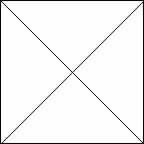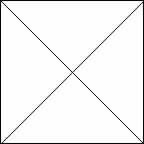Scientific Name
Common Name
Distribution
Size
Notes
Chondrodactylus
C. angulifer
(Namib) Sand Gecko
Southern Africa (S. Namibia, Botswana, RSA [Cape Province])
Max SVL 11¼cm (m), 9¾cm (f): avg SVL 7-9cm
Robust terrestrial gecko of the savannahs and deserts, distinguished by a relatively large head and the comb-like scales on its digits (hence the Latin name) that enable it to cross sand. It is attractively marked, with an overall brownish hue with various markings (often chevron-shaped) down the back. Males can be told apart by a number (one to four) of white markings with dark outlines on their back or sides. In the wild they often install themselves in the burrows of other animals, and in captivity they like to burrow in the substrate (obviously necessitating a deeper amount of sand than usual). They are nocturnal. Coborn recommends a terrarium of 18" x 12" x 12" for a pair, Rogner a desert terrarium of 50 x 40 x 40cm for 2-3 animals. Substrate should be a mixture of coarse sand and shingle, with burrows formed either from rocks (glued together to avoid accidental collapse through lizard activity) or strong plastic piping. Temperatures should rise to 86 deg F/30 deg C during the day with a "hot spot" of about 35 deg C in one corner, but at twilight the heaters should be all turned off so that temperatures can drop to room levels, simulating the very noticeable decrease in desert temperatures at night. Lights should obviously also go off at this time. Only Sand Geckos of similar size should be kept together as these geckos will eat smaller lizards, including possibly their own species. Scalation details: rostral small, pentagonal; nostril pierced between 3 nasals, of which anterior is largest and in contact with its neighbour; 9-10 supralabials, 10-11 infralabials; mental narrow, a little longer than adjacent labials; no chin-shields; snout and crown covered with polygonal scales, largest around orbit; temples and occiput with small granules mixed with keeled tubercles; throat granulate; abdominal region with small smooth subhexagonal imbricate scales. Tail: cylindrical, tapering, covered with irregular flat scales, intermixed above with conical tubercles arranged in transverse series. Other: head large, swollen; snout very short and convex; interorbital space narrow, slightly concave; ear-opening an oblique slit, half the diameter of the orbit; body short, not depressed; limbs rather slender. Coloration: dorsally light grey-brown; 5 more or less marked blackish angular transverse bands on the sides of the back; median longitudinal dark streak on the nape; oblique dark band from the eye towards the latter; tail with dark annuli above; lower surfaces whitish. Reproduction: gravid females present in wild Oct-Jan, hatchlings, Dec-April: captive incubation time 45-60 days, in the wild 90 days: see Branch for further details.
C. a. angulifer
S Namibia, RSA [Cape Province]
SVL 10cm (m), 9cm (f)
Scalation details: ventral scales increase in size on the sides. Other: limbs stout. Coloration: 4-5 pale dark-edged chevrons that extend on to the tail as bars, more conspicuous on females, especially in the shoulder region, fainter in males which usually have the bars reduced to a series of white dorsolateral dots [SOURCE: Branch].
C. a. namibensis
Namib Desert (Namibia and Botswana)
Scalation details: ventral scales decrease in size on the sides. Other: limbs slender. Coloration: pale dorsal pattern with enlarged white-tipped tubercles in both sexes [SOURCE: Branch].

